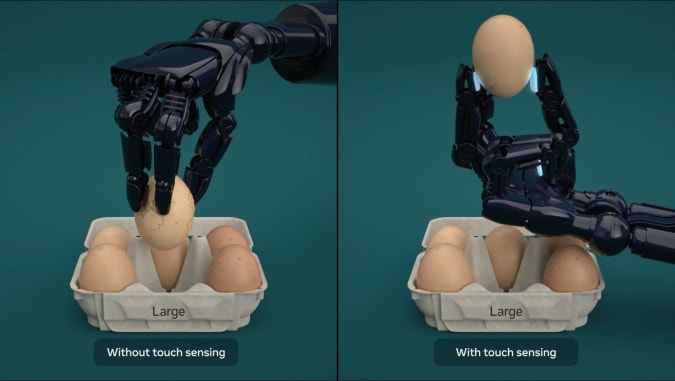In terms of simulation, which allows ML systems to train in a virtual environment without the need to collect heaps of real-world hardware data (much the same way Waymo has refined its self-driving vehicle systems over the course of 10 billion computer generated miles), FAIR has developed TACTO. This system can generate hundreds of frames of realistic high-resolution touch readings per second as well as simulate vision-based tactile sensors like DIGIT so that researchers don’t have to spend hours upon hours tapping on sensors to create a compendium of real-world training data.
“Today if you want to use reinforcement learning, for example, to train a car to drive itself,” LeCun pointed out, “it would have to it would have to be done in your turn environment because it would have to drive for millions of hours, cause you know countless thousands of accidents and destroy itself multiple times before it burns its way around and even then it probably wouldn't be very reliable. So how is it that humans are capable of learning to drive a car with 10 to 20 hours of practice with hardly any supervision?”
“It's because, by the time we turn 16 or 17, we have a pretty good model of the world,” he continued. We inherently understand the implications of what would happen if we drove a car off a cliff because we’ve had nearly two decades of experience with the concept of gravity as well as that of fucking around and finding out. “So ‘how to get machines to learn that model of the world that allows them to predict events and plan what's going to happen as a consequence of their actions’ is really the crux of the problem here.”
Sensors and simulators are all well and good, assuming you’ve got an advanced Comp Sci degree and a deep understanding of ML training procedure. But many aspiring roboticists don’t have those sorts of qualifications so, in order to broaden the availability of DIGIT and TACTO, FAIR has developed PyTouch — not to be confused with PyTorch. While Torch is a machine learning library focusing primarily on vision-based and NLP libraries, PyTouch centers on touch sensing applications.
“Researchers can simply connect their DIGIT, download a pretrained model and use this as a building block in their robotic application,” Calandra and Facebook AI Hardware Engineer, Mike Lambeta, wrote in a blog published Monday. “For example, to build a controller that grasps objects, researchers could detect whether the controller’s fingers are in contact by downloading a module from PyTouch.”
Most recently, FAIR (in partnership with Carnegie Mellon University) has developed ReSkin, a touch-sensitive “skin” for robots and wearables alike. “This deformable elastomer has micro-magnetic particles in it,” Facebook AI Research Manager, Abhinav Gupta, said. “And then we have electronics — a thin flexible PCB, which is essentially a grid of magnetometers. The sensing technology behind the skin is very simple: if you apply force into it, the elastomer will deform and, as it deforms, it changes the magnetic flux which is read by magnetometers.”
“A generalized tactile sensing skin like ReSkin will provide a source of rich contact data that could be helpful in advancing AI in a wide range of touch-based tasks including object classification, proprioception, and robotic grasping,” Gupta wrote in a recent FAIR blog. “AI models trained with learned tactile sensing skills will be capable of many types of tasks, including those that require higher sensitivity, such as working in health care settings, or greater dexterity, such as maneuvering small, soft, or sensitive objects.”
Despite being relatively inexpensive to produce — 100 units cost about $6 to make — ReSkin is surprisingly durable. The 2-3mm thick material lasts for up to 50,000 touches while generating high-frequency, 3-axis tactile signals and while retaining a temporal resolution of up to 400Hz and a spatial resolution of 1mm with 90 percent accuracy. Once a swath of ReSkin reaches its usable limits, replacing “the skin is as easy as taking a bandaid off and putting a new bandaid on,” Gupta quipped.

إرسال تعليق